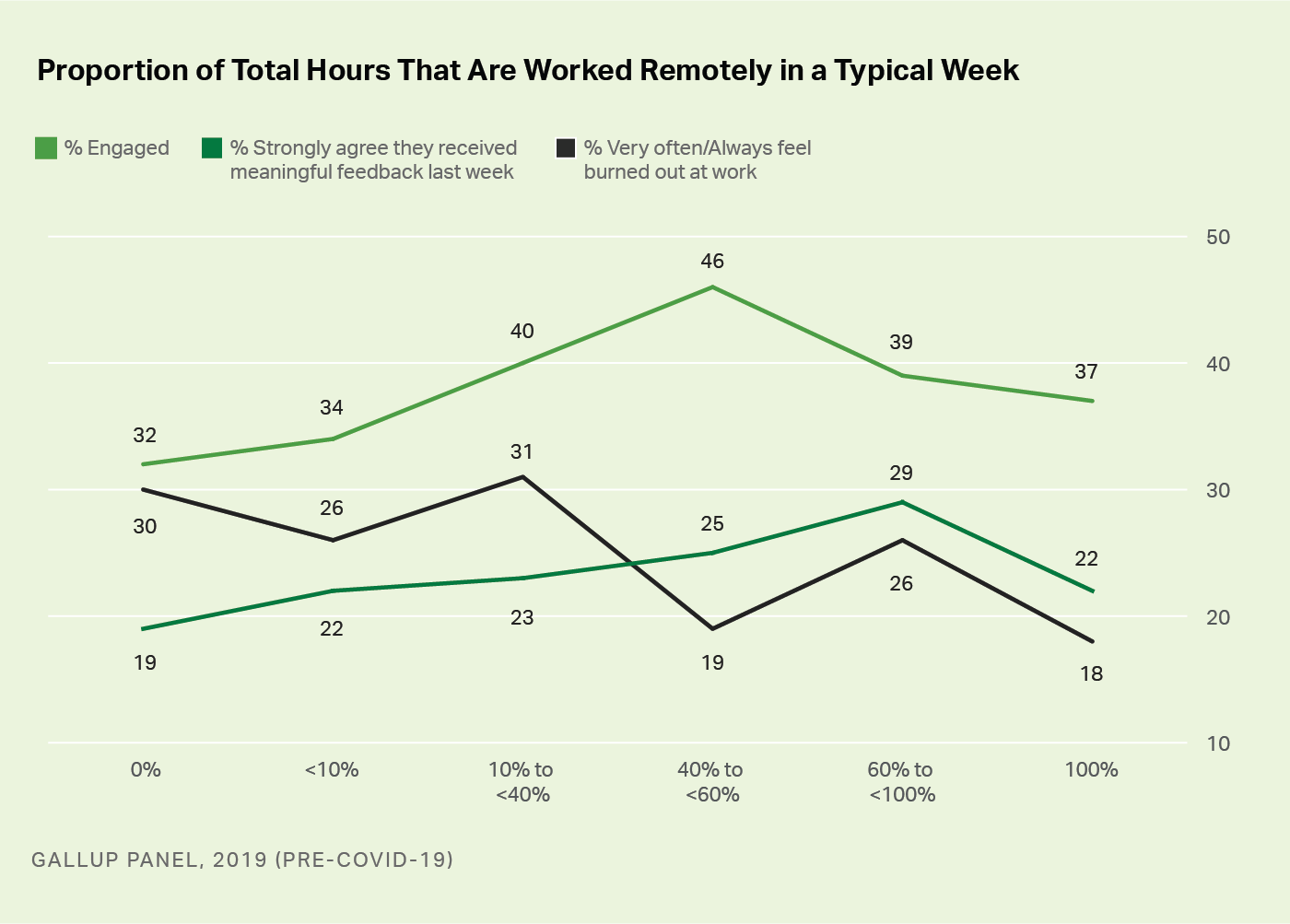Story Highlights
- Recent challenges have made leading remote teams even tougher
- Preventing burnout from work presents new challenges for companies
- Managers must understand the unique challenges of their remote employees
Leading remote teams is a demanding and unique experience. More so, leading remote teams after weeks of stay-at-home orders, preparing for mid-year progress reviews, and figuring out how to maximize your employees' productivity is even more intense.
One of the most significant problems that both in-house and remote workers may fall victim to is burnout.
According to a 2019 Gallup study, 28% of full-time employees reported feeling burned out at work "very often" or "always." An additional 48% reported feeling burned out "sometimes." That means most full-time employees -- nearly eight in 10 -- experience burnout on the job at least sometimes.
Before COVID-19, remote workers tended to experience less burnout than employees with traditional work arrangements because of the work and life advantages to working from home.
But with a new, large force of remote employees -- and many managers who are new to managing remote workers -- preventing burnout presents new challenges for companies.

Line graph. Proportion of total hours that are worked remotely in a typical week ranging from 0% to 100% and comparing three data points for each group, depending on how much they work from home. For those who work from home 0% of the time, 32% were engaged, 30% very often or always feel burned out at work, and 19% strongly agreed that they received meaningful feedback in the last week. Of those who work from home 100% of the time, 37% were engaged, 18% very often or always feel burned out at work, and 22% strongly agreed that they received meaningful feedback in the last week. It's among those who work from home 40% to 60% of the time who enjoy the highest engagement at 46%, and the lowest incidence of burnout at 19%, in that group 25% strongly agree they received meaningful feedback in the last week.
The unique burnout challenges remote employees face may not surprise some leaders, but even challenges that are anticipated or expected require intentional strategies by the remote employee's manager.
Managers still own 70% of their employee's engagement, whether they are remote or not. Meaningful conversations still need to continue.
Each "challenge" associated with causing burnout in remote work settings has a "fix" associated with it. However, these fixes are not a one-size-fits-all solution. Rather, managers need to ask and listen to employees and work with them more like a coach and less like a boss -- adjusting their style to the unique talent and situation of the remote employee.
Employees not knowing or understanding their new expectations and accountability practices.
Employees learn a lot about their expectations from context -- and the less time they spend in the office, the less context they have. So, managers need to be explicit about what remote workers must produce. The parameters, deadlines and metrics of tasks must be crystal clear, but so should the manager's requests. If a manager needs weekly progress reports, for instance, or prompt replies to emails, they must say so and hold employees accountable. Be clear, collaborative and aligned in your expectations.
Employees feeling untrusted, unseen or unheard.
Ongoing, meaningful communication can help establish an environment of trust and accountability, while still giving remote employees a sense of independence and a way to show the great work they're doing. So, be deliberate about when and how you communicate with remote employees. You may not need daily 30-minute "check-in" conversations, but you should connect with them consistently. Use phone calls, email, instant or text messaging, or videoconferencing.
Most full-time employees -- nearly eight in 10 -- experience burnout on the job at least sometimes.
Employees not being able to separate work and life.
People's homes are now their offices, which may not be an ideal work environment for some. This presents a magnitude of problems, like technology issues or children whose needs consume an employee's most productive hours of the day. Managers must communicate that these factors that are influencing their employee's ability to work are normal -- they must be willing and open to share about the factors that muddy the separation between work and life. Everyday distractions should be shared in conversations between the manager and employees. Encourage your employees to "do it all" but remind them that the way they do it all will look different for everyone, and that's OK.
Employees feeling detached from team and organizational culture.
Organizational culture -- the norms that define "why we exist," "what we believe in," and "how we do things" -- dictates how employees treat each other and experience the workplace. This all changed the minute your company went remote. Managers now own this portion. Communication is critical to foster positive performance outcomes. Within the context of daily connects and team meetings, share things like how the team is impacting customers, how the organization is staying ahead of disruptions, and how employees can help one another persevere through challenging times. This will keep your employees informed and closer to the organizational culture.
Employees feeling isolated and lonely.
Loneliness is emotional. Isolation is structural. And your remote employees are likely experiencing both. What's dangerous is that one study found workplace isolation can derail productivity up to 21%. Isolation is related to access -- or lack of it. The isolated can't get the materials or information they need, they think their achievements or developments are ignored, and they feel cut off from the business. Those aren't emotional issues, they're technical ones. Managers need to adjust their listening when they speak with their remote workers to hear when an employee is experiencing isolation and keep an eye on how they can remove it.
One of the most significant problems that both in-house and remote workers may fall victim to is burnout.
Employees not knowing how to create boundaries with colleagues.
Your employees know when their most productive time of the day is, but whether they have shared that knowledge is a different story. Have you asked this question of your remote employees? Clarifying conversations about when your employees are most productive throughout the day and when they can best accomplish work can help employees create and communicate boundaries. When you understand the individual needs of your employees, it becomes easier to relax the expectation that employees will work a standard 8-to-5 day as they would in an office. Shift your focus toward meeting the needs of your employees so they can manage their workload and get their work accomplished.
Burnout is a growing problem that leaders need to take seriously. Its prevention requires manager and organizational alignment -- because employees are less likely to experience burnout when their holistic workplace needs are met. Employees should feel supported and recognized for their work and connected to their team and manager.
Just as important, managers need to have clear, meaningful conversations attuned to their employees' unique talents. When remote workers are surrounded by a manager who supports them like a coach in an environment that meets their needs (even remotely), their engagement soars and they naturally flourish and perform well over the long term.
Lead your remote team away from burnout and toward engagement:
- Download Employee Burnout: Top Causes and Cures.
- Discover the best ways to prevent employee burnout.
- Find out what support your managers need to reduce burnout for their teams.





